
Home
Films
Awards
Equipment
Film Making
Tutorials
Links
MINIFIG WALKING TUTORIAL
One of the hardest things to animate (and one of the first things we all need to do) is learning to make a minifig walk realistically. Below are 4 examples of minifig movement, from the way a lot of people start out, through to an easy way to make a minifig run.
I'm not pretending the final examples are the best ways to animate a walking minifig, but they are easy to reproduce and look quite ok at 15 and 12 frames per second. Just below, and at the very end of the tutorial are links to all of the walks (in one movie file) animated at 15 frames per second in .avi and .rm formats. I suggest you download and watch the .avi or .rm file whilst reading the tutoral.
DOWNLOADS:
(Sorry about the flickering lighting in these... I kept bumping the lights and moving about near the desk...)
- AVI Walk.avi 15fps showing all methods in action. (approx 700k , Indeo codec compression, quite clear)
- REAL MEDIA Walk.rm 15fps showing all methods in action. (under 100k, small enough just to click on and watch)
METHOD ONE: The waddle
1.
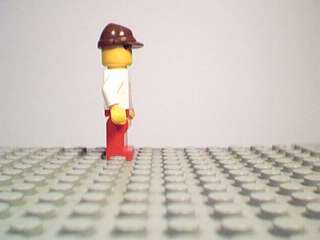 2.
2. 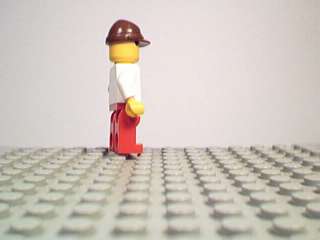 3.
3. 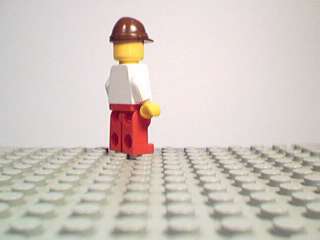 4.
4. 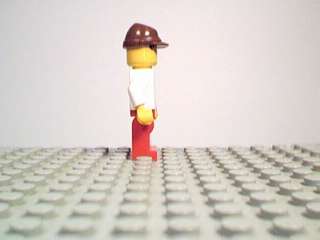
5.
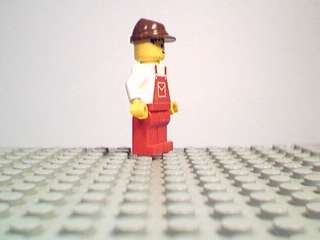 6.
6. 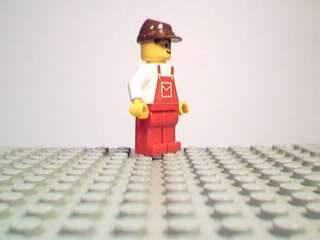
Study: Ok, not very pretty but very easy to animate! This is the place a lot of animators start, and for a number of reasons. It is easy to animate, especially if you are not sure what the walking action should look like.
Uses: Umm... a baby learning to walk, or a person stumbling (a little bit of leg lifting would make these ideas a little more practical!)
METHOD TWO: Straight Back (Marching)
1.
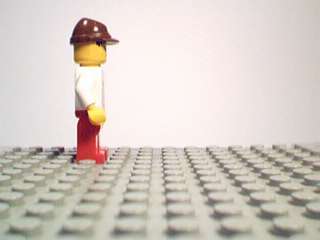 2.
2. 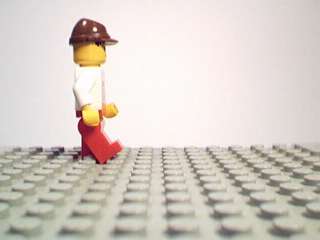 3.
3. 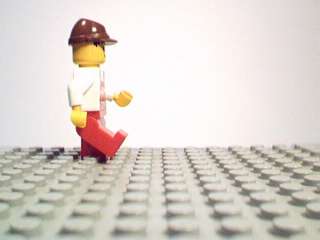 4.
4. 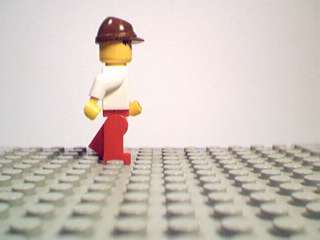
5.
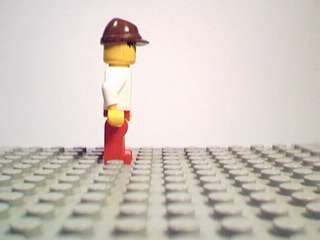 6.
6. 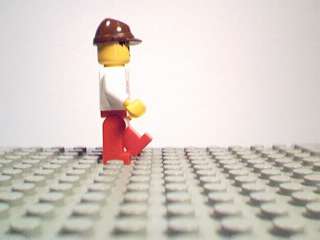 7.
7. 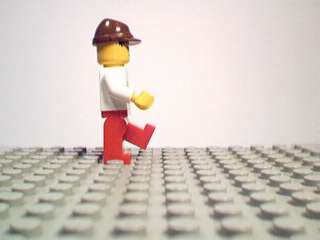 8.
8. 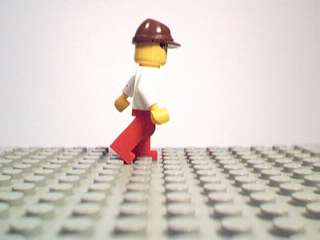
Study: Now that looks better! The only problem is that if you stand up and walk around the room at normal pace you'll notice that your arms move a bit more to help you balance and that for each step you take you are actually moving over (or 'falling' over) your front placed foot. This animation sequence shows the minifig with a very straight back and not much arm movement, as a result it looks jerky and forced. In fact it looks quite a bit like a formal soldier's march!
Uses: A soldier marching! Lift the legs a little higher and add a rifle!
Notes: I think this is the first method I used for 'natural' walking... watch NK2020 as the guys enter the store, you'll see what I mean.
METHOD THREE: Natural Walk
1.
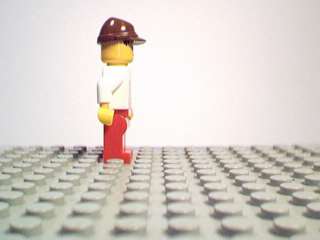 2.
2. 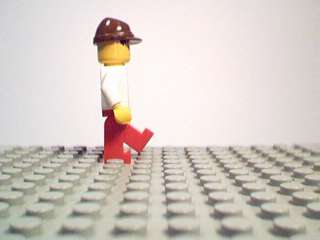 3.
3. 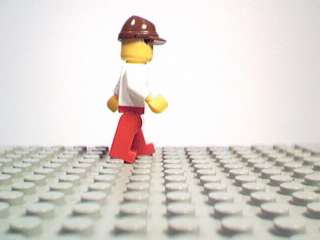 4.
4. 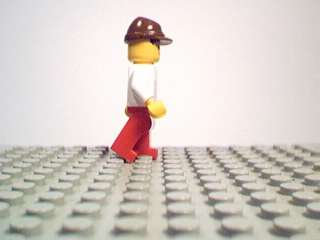
5.
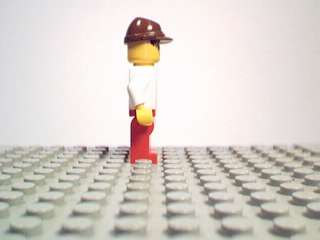 6.
6. 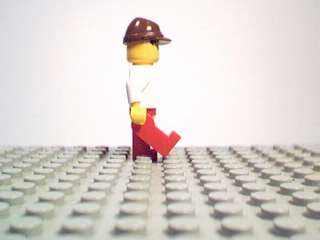 7.
7. 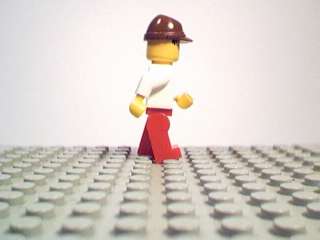 8.
8. 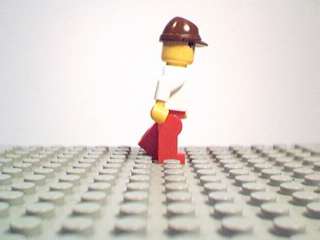
Study: Wow! What a difference! Same number of total frames for two steps, but it looks heaps smoother. What is different? a) Slightly better timed arm movements, b) instead of a straight back all the time a slight lean forward (only very slight! If you overdo this the minifig will look like it is bobbing up and down...) and, importantly, c) the feet in frames 3 and 7 are not fully on either of the baseplate bumps, they are set just in between.
You can run into problems with this one if you miss-time the arm movements. Look very carefully at frames 2, 3 and 4. You'll notice that in frame 2 the left leg has moved much farther forward than the right arm. If the right arm extends out much more than this it will look like (at real speed) that the arm is leading the leg instead of the arms 'following' the legs, i.e. to help the body balance.
In frame 3 the leg has dropped back down and the arm has extended more. Go for a walk again and notice how your arms swing back a bit more slowly to counteract the change in balance. The arm 'trails' the movement of the leg.
The only way to get good at this is to experiment!
Uses: General walking! I know at times I add a couple of more intermediate frames to smooth things out even more, but this looks pretty good.
Notes: If you've got more than one minifig walking at the same time use some 1x1 bricks to note the position of the legs of the figures (off screen, of course!) it is very easy to lose track, and even one frame out of step can make a smooth walk look disjointed.
METHOD FOUR: Running
1.
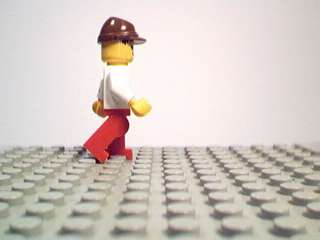 2.
2. 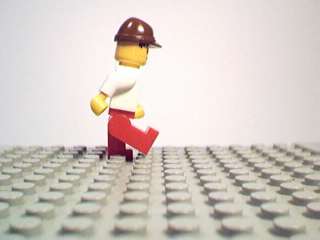 3.
3. 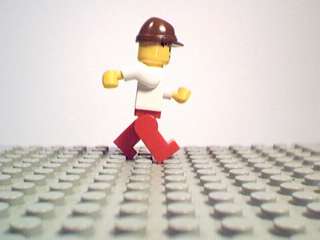 4.
4. 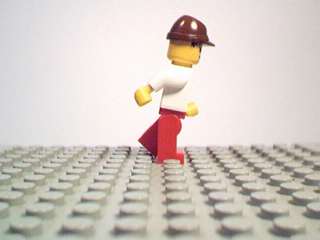
5.
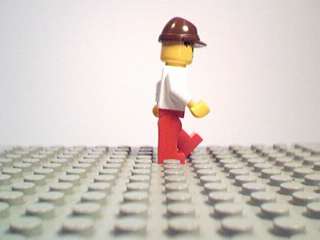 6.
6. 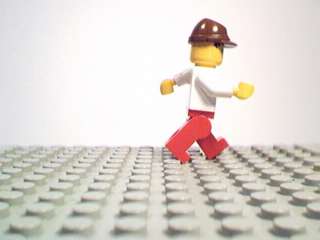 7.
7. 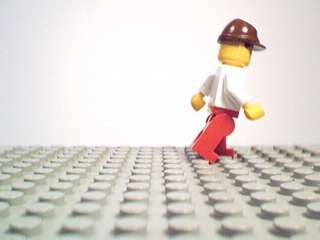
Study: I think I can do better than this, but for the time being this looks pretty good. Important things to note are frames 3 and 6 above, notice the full extensions of the arms and the spanning of 3 baseplate bumps. Additionally, at no time during the running do we see both legs exactly side by side.
Uses: Running!
Notes: In the animation watch the little wobble the minifig does when he stops. Nobody can stop instantly due to momentum, and you especially have to take this into account when a running minifig comes to an abrupt halt.
DOWNLOADS
Well good luck! I hope that has helped some of you out there trying to come to grips with getting a minifig to walk smoothly!
Want to contact me?
Nick Maniatis at h26fsok001@sneakemail.com
Stop Spam with sneakemail.com